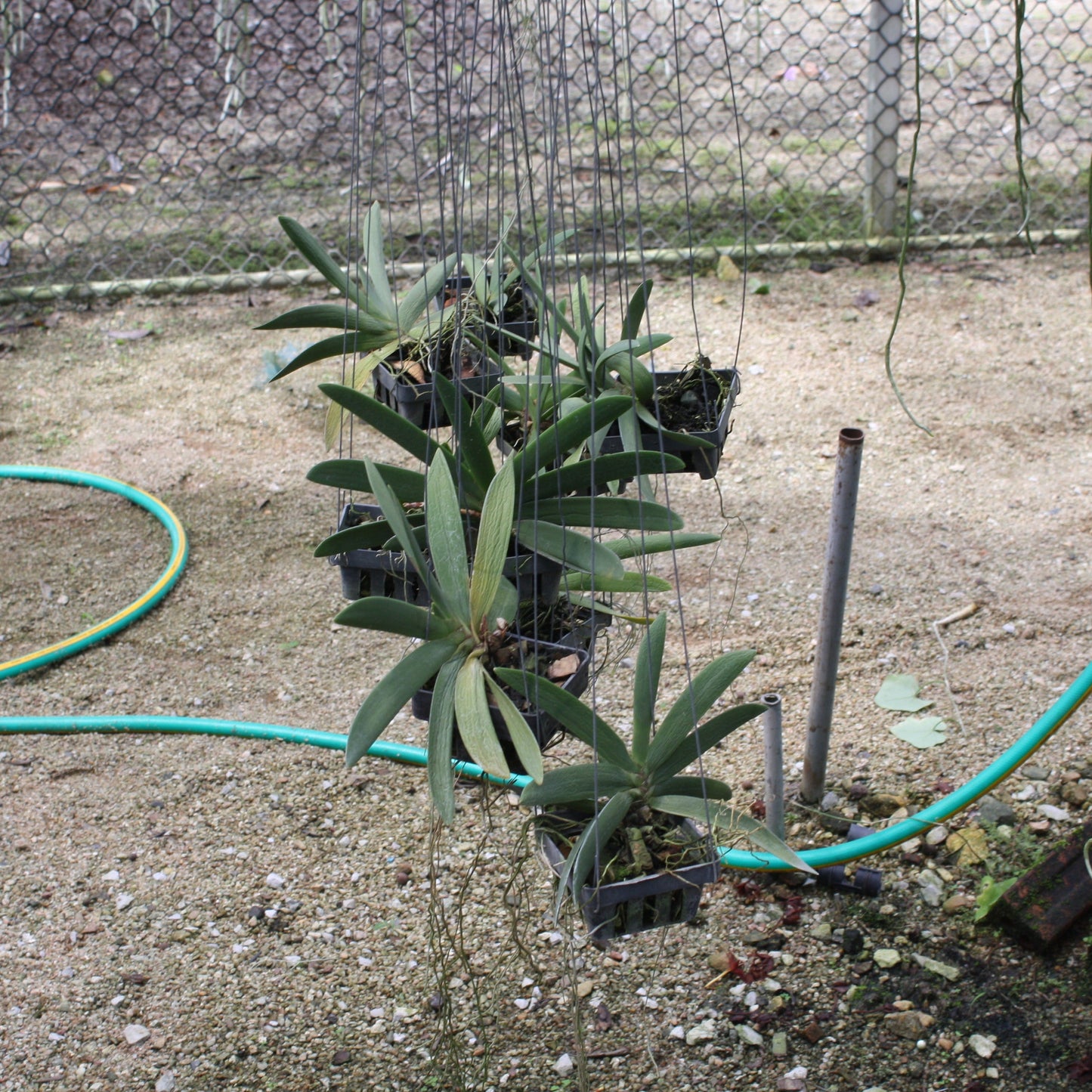Angraecum leonis
Angraecum leonis
Angraecum leonis 1 Plant Bloom size , plant in stock
Angraecum leonis is a stunning orchid species native to the Comoros Islands and Madagascar, part of the diverse Angraecum genus, which is famous for its star-shaped, fragrant flowers. This species thrives in warm, humid environments and is popular among orchid enthusiasts for its compact size and striking blooms.
Angraecum leonis
Flowers:
• Large, star-shaped, and waxy white with a characteristic long nectary spur, typical of Angraecum species.
• Usually 1–2 flowers per inflorescence.
• Strongly fragrant at night, adapted to attract moth pollinators.
Leaves:
• Thick, leathery, dark green leaves with a fleshy texture.
• Arranged alternately along a short stem, giving the plant a robust, compact appearance.
Growth Habit:
• Monopodial growth (grows from a single central stem).
• Compact size makes it suitable for smaller growing spaces or indoor collections. Natural Habitat: Found in humid forests at low to mid-elevations, where it grows as an epiphyte (on trees) or occasionally as a lithophyte (on rocks), benefiting from good air circulation and indirect light.
Cultivation and Care Tips: • Light: • Bright, indirect light; avoid harsh midday sun to prevent leaf burn. • Can tolerate some direct morning or late afternoon sunlight. • Temperature: • Warm to intermediate conditions: 65–85°F (18–29°C) during the day, with a slight drop at night. • A nighttime temperature drop can help trigger flowering. • Humidity: • Prefers high humidity levels (50–70%), with good air circulation to prevent fungal issues. • Regular misting can help maintain humidity, especially indoors. • Watering: • Water thoroughly when the potting medium is nearly dry. • Reduce watering slightly during cooler months or when the plant is not actively growing. • Use rainwater or distilled water if possible, as Angraecum species are sensitive to hard water. • Potting Medium: • A well-draining mix such as medium-grade bark, with some sphagnum moss or perlite to retain slight moisture. • Can also be mounted on cork or tree fern slabs if high humidity is maintained. • Fertilizer: • Use a balanced orchid fertilizer at ¼ to ½ strength every 2–3 weeks during the growing season. • Flush with plain water monthly to prevent salt buildup. Blooming and Flowering Cycle: • Typically blooms in late fall to winter, though this can vary depending on conditions. • Flowers are long-lasting, sometimes remaining in bloom for several weeks. • A drop in temperature and shorter daylight hours can help initiate flowering.
Couldn't load pickup availability
Low stock: 5 left
View full details



